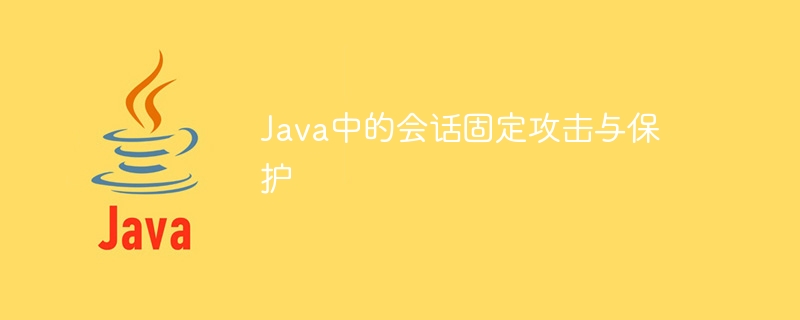

Session Fixation Attacks and Protection in Java
In web applications, sessions are an important mechanism used to track and manage users’ movements on a website. Activity. It does this by storing session data between the server and client. However, a session fixation attack is a security threat that exploits session identifiers to gain unauthorized access. In this article, we will discuss session fixation attacks in Java and provide some code examples of protection mechanisms.
Session fixation attack means that the attacker injects malicious code or steals the session identifier of a legitimate user through other means, thereby impersonating the user to perform illegal operations. Attackers can obtain session identifiers through various methods, such as network monitoring, cross-domain scripting attacks, social engineering, etc. Once an attacker obtains a session identifier, they can perform arbitrary actions, including viewing, modifying, or deleting a user's sensitive information.
In Java, we can protect applications from session fixation attacks by:
import java.util.UUID; String sessionId = UUID.randomUUID().toString();
import javax.servlet.http.HttpSession; HttpSession session = request.getSession(); session.setMaxInactiveInterval(1800); // 会话过期时间为30分钟
import javax.servlet.http.HttpSession; HttpSession session = request.getSession(false); session.invalidate(); // 使当前会话无效 session = request.getSession(true); // 创建新会话
import javax.servlet.http.Cookie; Cookie cookie = new Cookie("sessionId", sessionId); cookie.setSecure(true); // 只在HTTPS连接时传输Cookie cookie.setHttpOnly(true); // 限制Cookie只能通过HTTP协议访问 response.addCookie(cookie); // 将Cookie发送给客户端
In summary, session fixation attacks are a common network security threat, but in Java we can take some steps protective measures to reduce risk. We can increase application security by randomizing session identifiers, using the HTTPS protocol, limiting session validity, regularly changing session identifiers, and setting secure cookie attributes. In actual development, we should also pay close attention to the latest trends and technologies in network security, and promptly update protective measures to protect users' information security.
The above is the detailed content of Session fixation attacks and protection in Java. For more information, please follow other related articles on the PHP Chinese website!
 What to do if the CPU usage is too high
What to do if the CPU usage is too high What software is flash?
What software is flash? Registration domain name query tool
Registration domain name query tool The difference between ms card and sd card
The difference between ms card and sd card What is the difference between full-width spaces and half-width spaces?
What is the difference between full-width spaces and half-width spaces? route add command introduction
route add command introduction hiberfil file deletion method
hiberfil file deletion method Python online playback function implementation method
Python online playback function implementation method



